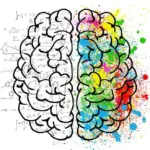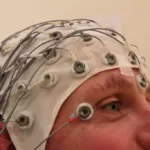Creativity tests are assessments designed to measure an individual’s creative thinking abilities, problem-solving skills, and capacity for generating original ideas. These tests aim to provide insights into a person’s imaginative thinking, fluency, flexibility, and originality in approaching challenges and tasks.
Creativity tests often involve engaging individuals in divergent thinking tasks, where they are required to generate multiple solutions, think outside the box, and come up with unique ideas. These assessments may include tasks such as completing incomplete drawings, brainstorming exercises, problem-solving scenarios, or hypothetical situations that stimulate creative thinking.
The primary objective of creativity tests is to provide an objective measure of an individual’s creative potential. They help identify individuals who demonstrate high levels of creativity and innovative thinking, allowing professionals in fields such as psychology, education, or business to nurture and harness these talents.
Creativity tests are utilized in various contexts, including education, research, and the workplace. In educational settings, these assessments assist in identifying gifted or talented individuals who possess exceptional creative abilities. They guide educators in designing appropriate learning environments and curricula that encourage and support creative expression.
In research, creativity tests contribute to studying the cognitive processes and factors that foster creativity. Researchers can investigate the relationship between creativity and various variables, such as personality traits, environmental influences, or problem-solving strategies.
In the workplace, creativity tests help organizations identify employees with strong creative potential. These assessments can be used for selection processes, team-building activities, and talent management initiatives. By recognizing and fostering creativity, organizations can drive innovation, problem-solving, and overall productivity.
It is important to note that creativity tests have limitations, as creativity is a complex and multifaceted construct. These tests provide a snapshot of an individual’s creative abilities within a specific context, and they should be used in conjunction with other assessments and qualitative observations to gain a comprehensive understanding of an individual’s creative potential.
List of Creativity Tests (Indian)
| S.No | Title of the Test | Author(s) |
|---|---|---|
| 01 | Passi Tests of Creativity (English & Hindi) | B.K. Passi |
| 02 | Verbal Test of Creative Thinking (Hindi) | Baqer Mehdi |
| 03 | Non-Verbal Test of Creative Thinking (English & Hindi) | Baqer Mehdi |
| 04 | Creativity Test (Hindi) | N.S. Chauhan & G. Tiwari |
| 05 | Majumdar Scientific Creativity Test Part I & II | S.K. Majumdar |
| 06 | Verbal Test of Scientific Creativity (VTSC) | V.P. Sharma & J.P. Shukla |
| 07 | Divergent Production Abilities | K.N. Sharma |
| 08 | Language Creativity Test (Hindi/English) | B.K. Passi & S.P. Malhotra |
| 09 | Language Creativity Test | S.P. Malhotra |
| 10 | Language Creativity Test (Hindi) | S.P. Malhotra |
| 11 | Language Creativity Test (English) | S.P. Malhotra |
| 12 | Passi-Usha Test of Creative Problem Solving | B.K.Passi & Usha Kumar |
| 13 | Mental Imagery Questionnaire | M. Rajamanic Kumar |
| 14 | Children’s Curiosity Scale (CCS) | Rajiv Kumar |
| 15 | Passi-Usha Test of Creative Problem Solving (PUTCPS) | B. K. Passi & Usha Kumar |
| 16 | Creative Behaviour Questionnaire | Dr. A.P. Singh & Dr. L. K. Mishra |





